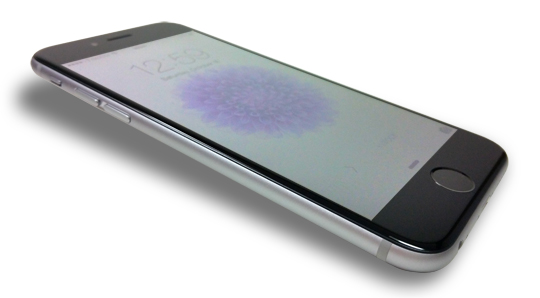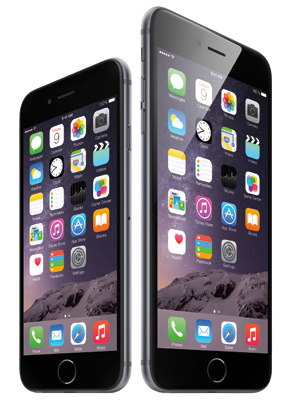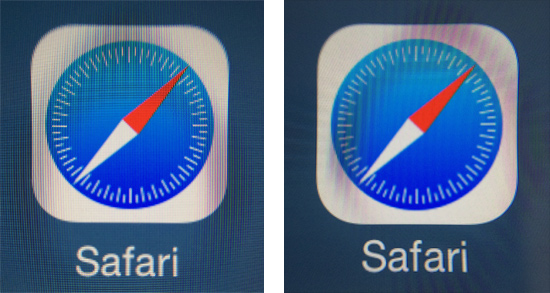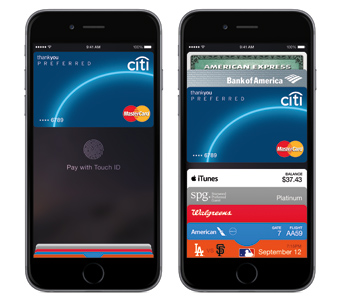Early Verdict
While it isn't revolutionary, the iPhone 6 hits the sweet spot between a larger screen and comfortable, one-handed use.
Pros
- +
Sleek design, excellent screen, continuous autofocus, NFC/Apple Pay, fast CPU, comfortable to use with one hand.
Cons
- -
Only 1 GB of RAM, smooth/slippery surface makes it easy to drop, expensive, merely catches up to the pack, no OIS.
Why you can trust Tom's Hardware
Why The iPhone 6 Is A Big Deal
iPhone Enters A New Era
Steve Jobs, the charismatic visionary and iron-fisted ruler who forged a personal technology juggernaut, passed away three years ago. With Apple’s product pipeline primed for several years, his influence persisted.
In the Jobs era, Apple didn’t create new product categories, it defined them. Apple didn’t invent the portable music player, tablet computer or smartphone, but the iPod, iPad and iPhone elevated the user experience and gave us everything we didn’t know we needed. Overnight, these previously geeky gadgets, tolerable only to the technorati, became indispensable for millions of people. In the Jobs era, Apple was a trendsetter.
The iPhone 6 breaks this tradition. Rather than setting the standard for which all other smartphones are judged, it chases trends pioneered by its rivals. With the iPhone 6, the post-Jobs era is finally here.
The proof is provided by the new iPhone’s defining feature: screen size. At a press conference held on July 16, 2010 to address the iPhone 4 antennagate issue, a reporter asked about increasing the size of the iPhone’s 3.5-inch screen, to which Jobs replied “no one's going to buy that" because “you can't get your hand around it." Even while its competitors and some of its customers embraced larger screens, Jobs didn’t abandon his belief, for right or wrong, that a phone should be easy to use with one hand. Would Jobs approve of the new 4.7-inch iPhone 6? Maybe, but the 5.5-inch 6 Plus would most certainly have resulted in a tirade from Steve and the immediate dismissal of employees. In the post-Jobs era, Apple responds to market pressure. But I wonder, is this a bad thing?
“Bigger Than Bigger”
This is the biggest iPhone launch in history. The larger screens in the iPhone 6 and iPhone 6 Plus helped Apple sell a record 10 million devices over the opening weekend, surpassing the 9 million mark set by the iPhone 5s and 5c, whose opening weekend sales additionally included the Chinese market. But while the iPhone 6 launch may be the biggest in terms of physical size and units sold, its technological growth is a bit more modest.
The new Retina HD Displays are the obvious new features, with the monolithic iPhone 6 Plus using a 5.5-inch 1920x1080 panel at 401 PPI. The 4.7-inch iPhone 6 qualifies as an HD screen, but is closer to 720p with a resolution of 1334x750. This odd resolution gives the iPhone 6 1.38x as many pixels as the iPhone 5s and maintains the same pixel density of 326 PPI. It’s a bit disappointing that the iPhone 6 doesn’t share the same 1080p resolution as the 6 Plus. Sure, sub 5-inch 1080p screens are rare, but not unheard of—the HTC One M7 had a 4.7-inch 1080p screen in 2013. Rather than position the iPhone 6 as a leader in its category, Apple chooses to further fragment its platform.
While the two phones don’t share the same resolution, there are several refinements their screens have in common, including photo-aligned crystals. The basic construction of an LCD panel includes a liquid crystal layer sandwiched between two conducting glass substrates coated with an organic material—usually polyimide—that helps preferentially align the crystals. One common method for achieving this is rubbing the organic layers in a certain direction, which aligns the polymeric chains that the crystals interact with. But this method tends to contaminate the material with dust particles and static charge. A better alternative is to use light, particularly UV light, to modify the organic layer, either physically or chemically, thus avoiding the contamination caused by direct contact. This technique dates back to the '90s and over the years many different methods have been developed. Based on Apple’s description, it appears UV light, used in conjunction with a photoresist layer, is used to attain a more accurate alignment of the liquid crystals. Better-aligned crystals yield several benefits, like a lower black level and thus, a higher contrast ratio.
Get Tom's Hardware's best news and in-depth reviews, straight to your inbox.
The new Retina HD Displays also have improved viewing angles through the use of dual-domain pixels. With this type of display, each pixel is split into two domains or sub-pixels, which have a slightly different crystal orientation. As you shift your view, the pixels oriented away from you become dimmer, while the complementary sub-pixel oriented towards you gets brighter, partially compensating for that color's brightness reduction. With single-domain pixels, there’s no compensation as you move away from the pixel’s orientation, resulting in a more pronounced drop-off in color.
Both iPhone 6 models also have an improved polarizer, which, according to Apple, gives you “a clearer view when you’re wearing sunglasses.” To test this claim I donned a pair of polarized sunglasses and took an iPhone 6 and a 5s outside. I’m not sure what kind of magical coating gets applied to sunglasses in Cupertino, but I found the iPhone 5s screen’s visibility to be superior, albeit with more color shimmer. With brightness adjusted to the same level on both screens, the 5s appeared slightly dimmer but clearly legible with my sunglasses on. The iPhone 6 screen, on the other hand, was so dark that the phone was basically unusable. If the new polarizer offers any advantages, improving visibility while wearing sunglasses isn’t one of them.
New Silicon And Faster Wireless
In addition to the bigger screens, the iPhone 6 sees several more incremental improvements over the previous-generation iPhone 5s. There’s a new, faster A8 SoC and updates to the cameras—topics we’ll discuss more in depth later. The motion coprocessor gets a revision bump to M8 and a new barometer sensor to monitor, its air pressure data signaling changes in elevation.
Wireless connectivity also gets a speed boost. The iPhone finally supports 802.11ac Wi-Fi, increasing maximum bandwidth from 150Mb/s on the iPhone 5s to 433Mb/s with an 80MHz channel. There’s also a new option for making voice calls over Wi-Fi using your own phone number. This feature is especially useful for people who don’t get a good cellular signal inside their home. It also opens up the possibility to send text messages and receive voicemail using an airline’s Wi-Fi service and avoid roaming fees while traveling. Wi-Fi calling is currently only supported by T-Mobile in the U.S.
The iPhone 6 makes the jump to LTE Category 4, which allows aggregating two 10MHz carriers and brings max bandwidth up to 150Mb/s. Along with better performance comes support for Voice over LTE (VoLTE), a standard that allows for simultaneous voice and data over LTE. For carriers not using VoLTE, the LTE networks can only carry data, which means all voice traffic uses a 3G connection. Networks based on GSM, like AT&T and T-Mobile, provide simultaneous voice and data connections, but only over 3G. The CDMA standard, used by Sprint and Verizon, in contrast does not support simultaneous voice and data at all, so it’s not possible to browse the Web while on a phone call. Without VoLTE, the only way to do simultaneous voice and data over LTE would be to use two separate radios, an undesirable proposition. The U.S. carriers AT&T, T-Mobile and Verizon currently have limited VoLTE support, but are working on expanding the service.
Apple Pay
Near Field Communication (NFC) is another wireless technology that’s been showing up in select smartphones for years. Since the NFC antenna is much smaller than the carrier wavelength, it can only establish a “near-field” within a few centimeters of the device. The most promising use for NFC is contactless payments, where its inability to transmit radio waves over longer distances is beneficial for security.
The iPhone 6 and 6 Plus are the first Apple devices to include NFC, which Apple puts to use in its secure payment solution called Apple Pay. Rendering wallets and credit cards obsolete, in-store payments are made by simply holding the iPhone 6 near the payment reader and using Touch ID to authorize the transaction. Apple Pay can also be used within apps by tapping the “Apple Pay” button.
Adding credit and debit cards for use with Apple Pay is simple, just open Passbook and take a picture of the cards. Instead of storing images of them, or even the credit card numbers, a unique, encrypted Device Account Number is created and stored within the Secure Element chip. When a purchase is made, this Device Account Number and a dynamic transaction security code are used to process the payment rather than the actual card numbers. With this system, neither Apple nor the merchant ever see your credit card numbers or even your name. Privacy seems to be a core requirement for Apple Pay, since the transaction details aren’t stored outside of Passbook. Apple claims there’s no way for it to know what you purchased, where you purchased it, or how much it cost. Hopefully, Apple Pay ushers in a new era where payments are made through electric fields rather than the exchange of physical objects.
Current page: Why The iPhone 6 Is A Big Deal
Next Page Hardware And Availability-
blackmagnum Everyone would want to own one and be the envy of their peers. They want a device that is attractive, well-made and intuitive. That's how Apple sells them by the millions, don't you agree?Reply -
lanbaner Nvidia has a better GPU. The G3 has a better display. The Note 4 has better camera. Gone are the days were the iPhone was the leader on all fronts. Would be nice to see all the strengths from the competition in one phone. Considering the transition to 20nm for Maxwell early next year we could possibly see an iPhonekiller on all aspects. Although I have to agree that the build quality on the iPhones is always top notch.Reply -
M3God Other then just sticking to just 1GB internal memory, there is no mention that apple switched to cheaper and slower TLC memory to make more profits while screwing the customer. The TLC memory has been linked to crashes and bootloops that require a trip to the apple store.Reply -
aaaas I browse the Web and talk on the phone on Verizon all the time. At least the last two generations of devices have been able to do this... at least for android...Reply
Interesting article, as I've been considering a switch to iphone. -
KaptainK " Wi-Fi calling is currently only supported by T-Mobile in the U.S."Reply
Not True! Republic Wireless has been using wi-fi calling for years. Republic also includes a feature where it will hand the call off from wi-fi to cellular if you leave the wi-fi zone during the call. Does the iPhone do this?? -
cknobman A. Thanks for including the Lumia 1520 in the comparison chart of phablets, most other sites dont do this.Reply
B. The price for the 6 plus in that same chart ($299) is on contract while every other device price is off contract.
As a whole if you are an iPhone user I am sure you are happy with the changes made to the 6. Outside of that the iPhone "cool factor" ship has sailed and this wont be winning over many Android users. -
cmi86 How can this guy sit here and hump apples leg by saying the A8 should be competitive if not class leading when it's competition averages over 1Ghz higher clock speed and 2 more cores.... I know a lot of people doing reviews now a days feel obligated to shine up certain companies and make their products appear in a positive light. This is not that... this is a blatant lie.Reply -
SirKnobsworth How can this guy sit here and hump apples leg by saying the A8 should be competitive if not class leading when it's competition averages over 1Ghz higher clock speed and 2 more cores.... I know a lot of people doing reviews now a days feel obligated to shine up certain companies and make their products appear in a positive light. This is not that... this is a blatant lie.Reply
Clock speeds and core counts can be deceptive, the key point here being that Apple's Cyclone cores can execute about twice as many instructions per clock cycle as most of their competitors. This shows up in the benchmarks - the iPhone 6 and 6+ do very well in single threaded tests, though tend to lag behind competitors in multithreaded tests like physics. Note that this is also the approach that Nvidia is taking with their Denver cores - fewer, bigger cores as opposed to more small cores.
How this translates into actual performance will vary of course - most smartphone workflows aren't particularly well threaded so having four cores as opposed to two probably won't make a huge difference in many situations, but I'm sure there are plenty of exceptions. -
ZXS ReplyDue to their zero reading on the black level tests, AMOLED displays are said to have an infinite contrast ratio.
MATT, do you know this is Samsung's marketing BS?
Smartphone displays reflect about 6% of incoming light (which is much more than LCD backlight emits). Actual contrast of AMOLED is worse than that of LCD since the reflections are so high, but maximum brightness is much lower than that of LCD.





